When we manufacture our printers at Prusa Research, we have everything under our control. We design the hardware, electronics, software, print settings, and even the firmware. That means we basically have full control over the final print quality. Or so we thought, there is one more thing that was (up until now) outside our control – and that’s the filament.
The filament quality can be determined in a variety of ways. By physical measurements, which means the precision of the diameter, ovality and how often and how much these parameters change. Also, by consistency. Are the color and material properties consistent throughout the whole spool of filament? Are the spools of the same type from different batches identical? Another important thing: the printing properties affected mainly by the resins and additives. For example, NatureWorks 4034D is a very good polymer for printing but also expensive. So, manufacturers can reduce their costs by using something different. And last but not least, there’s the quality of care in manufacturing. That includes perfect winding for tangle-free unspooling.
We have received a tremendous amount of feedback about filaments from our lovely community members, and I realized that with the current trend of looking for super cheap materials, we cannot expect manufacturers to improve the quality of their products.
To make a long story short, since last year we’ve been building a filament factory and perfecting our own in-house filament: Prusament! We are the only 3D printer manufacturer with in-house filament production. Having a team of over 40 professionals definitely helps with making custom machines, inspection, processes and automation. So let’s dive into some details on how we do things differently.
Mechanical properties
When we started manufacturing Multi Material Upgrade v1, we found out that all brands, including the very premium ones, have trouble achieving a consistent diameter and preventing lumps. The MMU v1 featured precisely ground stainless steel tubes with inside diameter of 1.85mm. That should be fine as virtually all filament manufacturers claim they have the manufacturing precision of ±0.050 mm or better on their 1.75mm filaments. That should result in a maximum diameter of 1.80 mm. As you might already guess from these few paragraphs, it is usually bullshit.
Some manufacturers care so little about the diameter consistency, that they just check the string with calipers after setting the extruder and puller speed. Optimally, you want an online laser measurement system with two axes (to measure ovality) from a reputable manufacturer. Then, you just need to measure as often as possible to catch the lumps which are only a few millimeters long.
We went a little further and we collect all the diameter measurements (more than 4700× per second) in our database together with all the extrusion line parameters. This was perfect for fine-tuning everything. Therefore, our manufacturing process allows us to guarantee the state-of-the-art precision of ±20 µm or better on every spool.
This is very important, because even the industry standard of ±50 µm may result in up to 11.4 % variation in volume, which means the diameter can be anywhere between 1.70 mm and 1.80 mm. In layman’s terms: it can lead to major problems regarding the printed object quality. That’s why our system will not allow any spool to be packed and shipped even if there’s only a single spot that is not within the 20 µm tolerance.
And we are so confident about our quality, that each spool has a scannable QR code on it, which displays a webpage containing the full individual report of manufacturing specifications with a graph and data analysis. We are the first manufacturer to ever do this, because we feel that it’s time to stop the bullshit specs that you can see pretty much everywhere, and step up the game.
For each and every spool you can check:
- Weight
- Length
- Basic diameter of the spool and maximum deviation
- Standard deviation (basically how much the diameter fluctuates)
- Ovality
- Graph of the diameter where you can inspect nearly every millimeter of your spool
If you want to see how it looks, you can check the sample spool on Prusament website. There is also another nice feature there – you can calculate how many meters/feet are remaining on your spool by entering its the weight in kg/lbs.
I certainly hope this approach will motivate other manufacturers to improve their filament making processes because the 3D printing world will be a much happier place – and you can trust me as a 3D printer manufacturer 🙂
Consistency
I have always hated when spools of the same color are actually not the same color, or there is a tone change even along the length of one single spool. First, we source masterbatches (concentrated pigment and additives) only from reliable European companies and the dosage is measured automatically and perfectly on the line itself based on the weight ratio. Secondly, we developed an online system based on the CIELAB ΔE* (CIE76) computing model. It constantly monitors the color tone of the filament and it’s placed just after the cooling tanks. We store this data, too, and the spool is automatically rejected if it’s not up to the specs.
Printing properties
You’ve probably noticed that different colors of the same material from the same manufacturer don’t always perform the same during printing. It’s mostly due to the choice of the resin (we use NatureWorks 4043D for our PLA), masterbatch and preparation. We’ve built an in-house lab, so we can test each batch to ensure it has the same properties as the rest. We have a tensile strength tester, Charpy hammer to measure the impact strength, melt flow index tester to test the resin properties and an oven to test the water absorption.
Plastic pellets are prone to absorbing moisture from the air. We prevent this by using a dry air aggregate with a series of dust filters. We dehumidify the pellets before sending them to the extrusion line.
Manufacturing care
Technical specs are one thing, but there are a few more factors, which at first glance seem insignificant and unmeasurable. Let’s take a look at our perfect winding. You cannot specify it in a datasheet, but it will ensure that the filament doesn’t have kinks in it and that it always unwinds nicely. To achieve this, we invested into integrating robotic arms into our production lines, so each and every spool is perfectly wound and same as all the other ones.
We also made sure that any spool that doesn’t meet our strict quality standards will not be shipped. It’s a small thing, which customers will never see, but it also counts.
Future plans
We’ve been shipping some MK3 printers with an unlabeled Prusament Silver PLA, which received universal praise. Previously, we mainly used filament made by FilamentPM labeled as Prusa PLA. We are still going to carry those under revised name Prusa Basic PLA. However, if you want the filament that we make ourselves, always look for Prusament.
Currently, we are launching only PLA spools, but we have PETG and ASA in the works and you can expect them soon!
So that’s Prusament – top-quality filament with the unique option to check detailed data of every manufactured spool online. At this moment, we offer PLA in four colors but we plan to greatly expand the color range in the near future. You can buy Prusament from our e-shop for 24.99 USD/EUR (VAT incl.) right now and I can’t wait to hear your feedback! Please, keep in mind, that it may take a few weeks to fully stock all items.
Oh, and one more thing – Prusament will be also available on Amazon within a month, because we know that shipping from Prague to the rest of the world can be a bit expensive 😉
Happy printing!
Jo Prusa

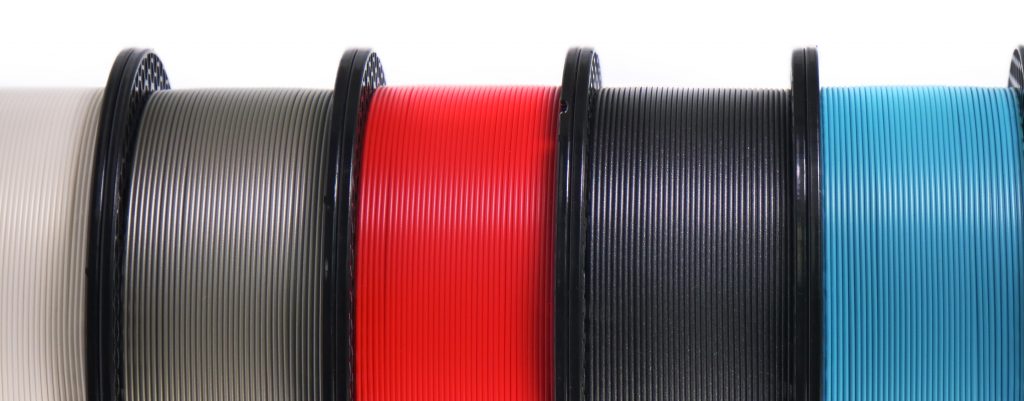
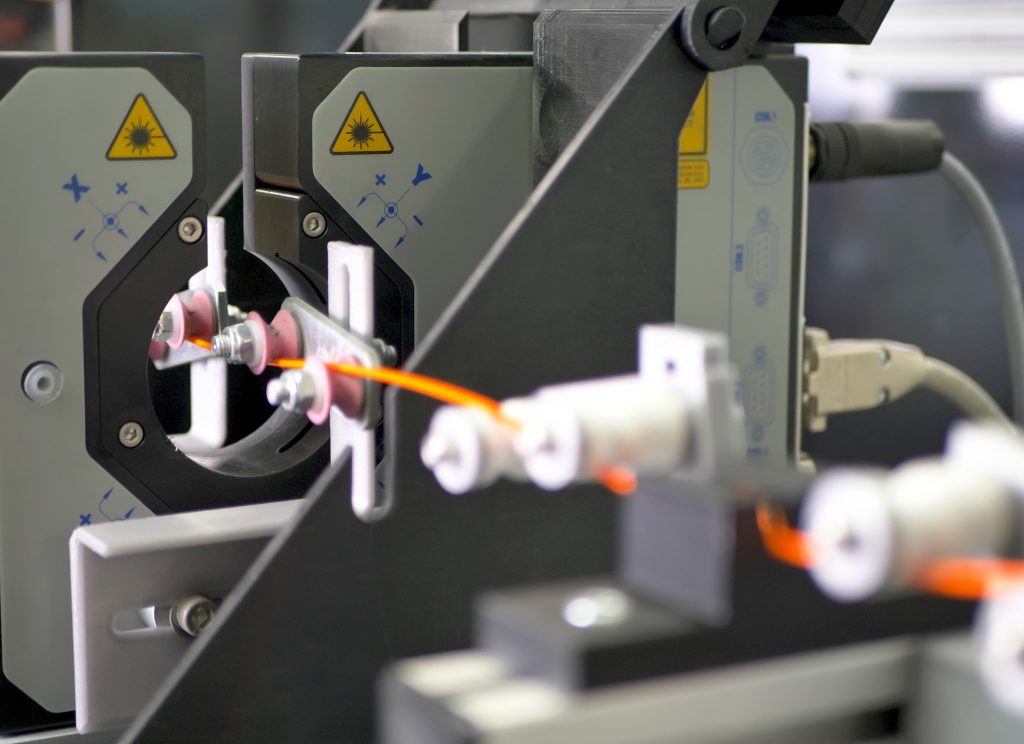
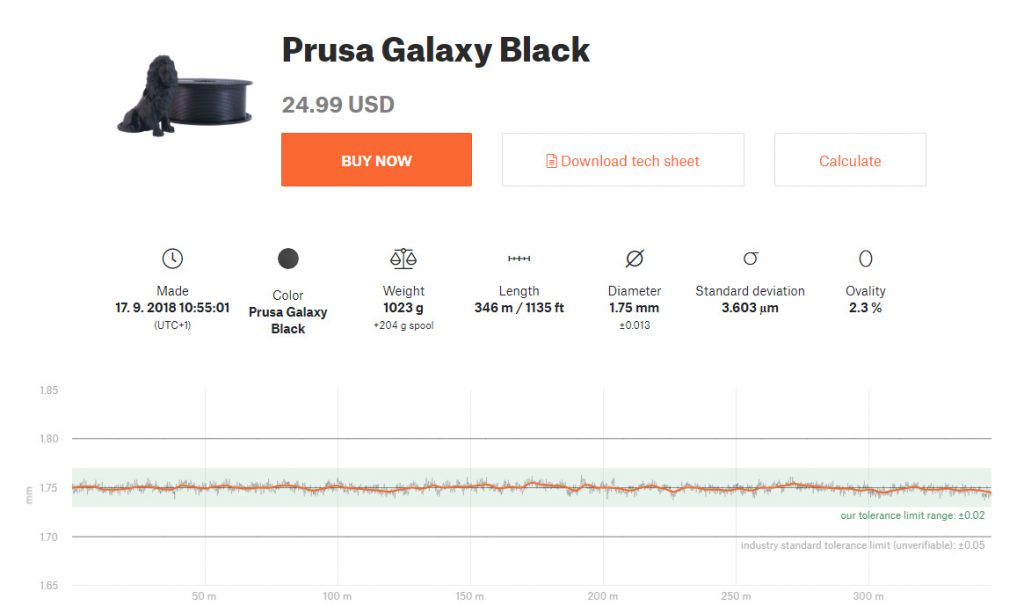
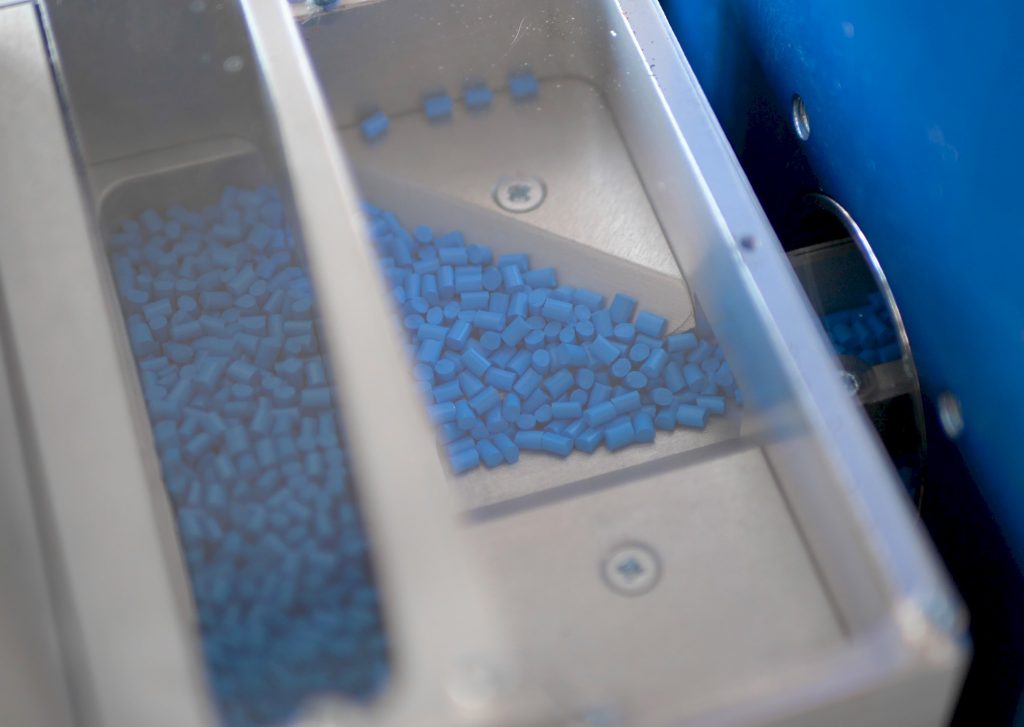
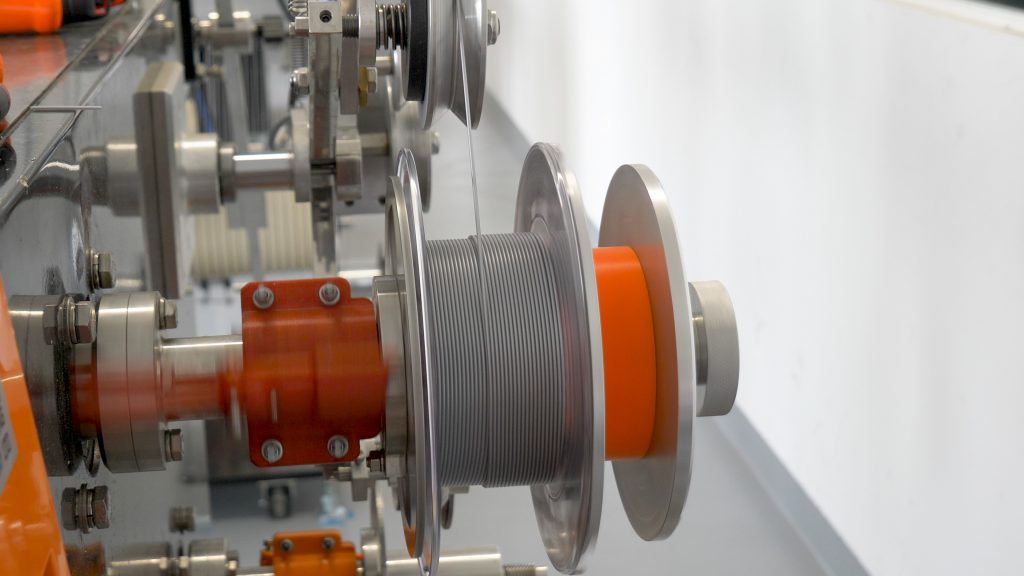
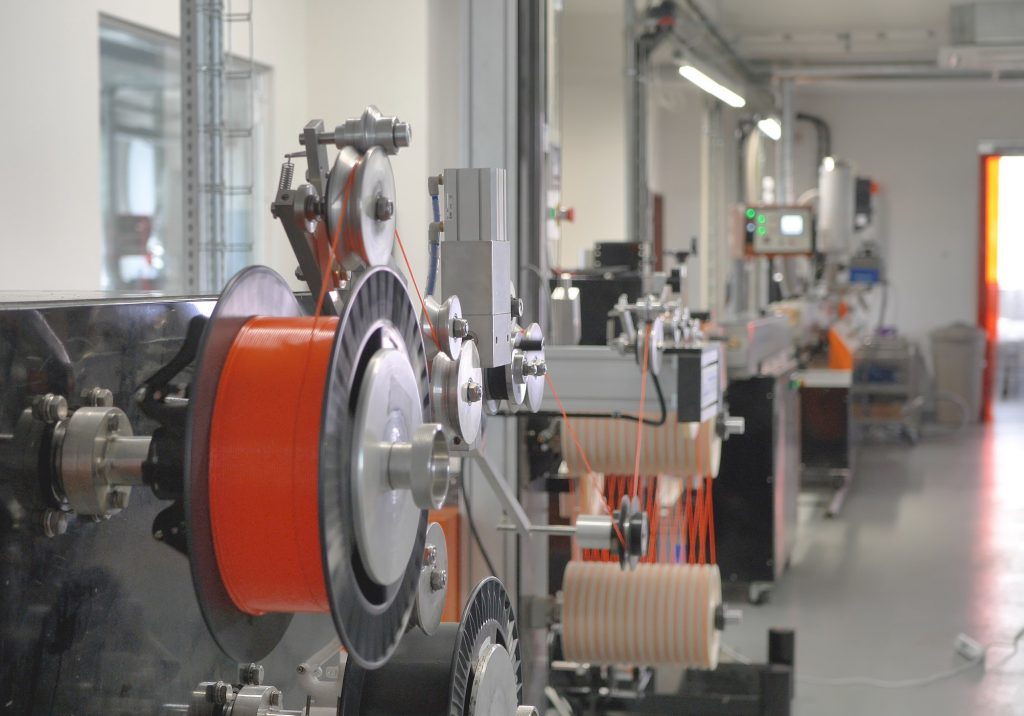
What about the Masterspool by RichRap?
I’m very interested in seeing how this is, it sounds wonderful. However, I am not a 3D printer master. I would love to see/read about the difference this will bring to our prints. I’d like to say even with my own ignorance that this sounds amazing. Thank you for going above and beyond. Hopefully this new level of competition will force other companies to improve filiment quality. Well done Prusa.
Just and simple : thank you ! Not just for you “jo” but for all your team !
will buy some if it goes on Amazon for sure. I’ll just make it my main brand then!
Can you please produce filament-refills to be used with master spools? Always a pain to buy filament and pay for a spool you just throw away and it weighs considerably, adding to the cost.
I hope Prusa will provide Pantone values of their colors, as many other mfrs. are now doing (and more should). I’ve had to return spools to some purveyors for not being anywhere near the represented (photo and description) color. Online/monitor images CAN be off, but at least with the Pantone values, color values (lightness/darkness) and tints/shades relative to others can be more easily discerned.
As always, quality work from a quality company.
Any chance of a version coming out that works with one of the master spools?
Here’s hoping it becomes available on Amazon Australia. At the moment Amazon won’t ship physical goods to Australia unless its already in the country.
Claimed it to hard to calculate the 10% GST when they already do the calculations for Europe and the VAT there on any order shipped to Europe.
What do you do with rejected spools?
Do you have a box of those with a discount maybe?
Hi Prusa team,
Cool, I can’t wait to get my hands on those filaments. I have indeed been disappointed with some filaments I have used (not all of them).
One question Jo: do you have plan to release filaments without a spool, that can be used with a reusable spool ?
Multiple models has been modelled on the internet, notably the masterspool, by Richrap.
I try to have a reasonable impact on the environment, and notably to avoid using disposable plastic items when possible. I would love to be able to use Prusament filament while still avoiding disposable spools !
This could be a really great initiative BUT the shipping costs seem way to high.
Hi Johnmoss, where are you from? We will have the Prusament available on Amazon as well.
I’m becoming a Prusa fanboy! But the fact is that Prusa really deserves it!
Congratulations to your new “Prusament”!
It would be nice, if you could specify the color of the filament using the Natural Color System. 1950 colors in a comprehensible system, with a very fine gradation. If you really cannot find an exact match, just tell the customer that the color ist between NCS-color 1 and NCS-color 2. A photo of the filament together with the color swatch would be ideal.
Yes, the color swatch is rather expensive, but it is worth the money.
https://www.ebay.de/itm/362426292069 (e.g.)
Keep on the good work!
Rgds Hans
(I love my Prusa i3 MK2S)
call me a crank, but it would sure be nice if it were available through a distributor whose business model didn’t involve the destruction of local economies and abuse of labor.
Does anyone know if the silver Prusament particles wear down print nozzles?
They do not, it’s just glitter, not actual metal particles 🙂 So you can use any brass nozzle.
the black Prusment is available on Amazon – any projections on other colors and especially the water soluble? In the meantime which is the best filament to use available via Amazon?